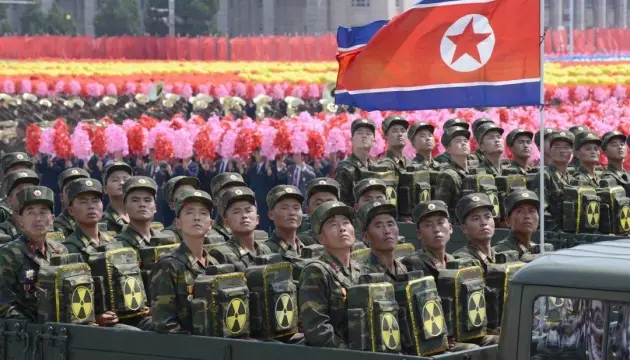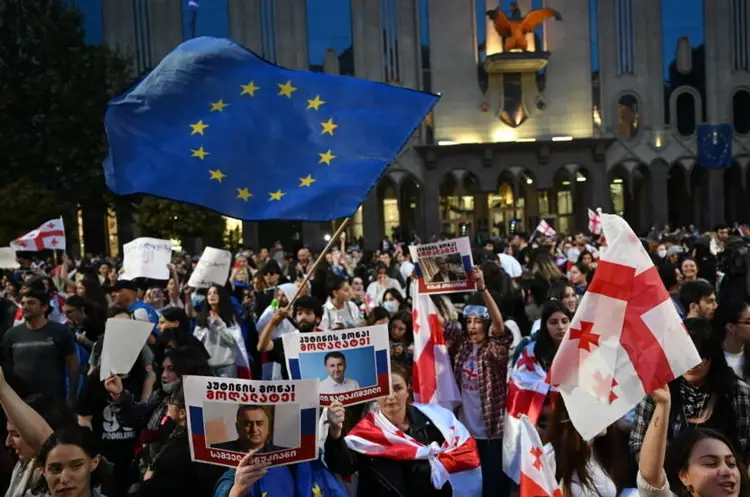Donald Trump's scandalous statements are changing the security landscape of Europe

What NATO expects if the United States does leave the Alliance
This year, a record 18 out of 31 NATO nations have pledged to reach the target defense spending of 2% of their GDP. This decision has been made after US presidential candidate Donald Trump's statements about the possibility of "encouraging" russia to attack countries that do not fulfill their defense contributions to NATO.
According to NATO Secretary General Jens Stoltenberg, the possibility of Trump's return to the presidency has sparked active discussions on US investment in transatlantic security.
It is understandable that Trump's words have caused significant concern among allies. In 2023, the United States spent $857 billion on its defense. All others are far behind. For example, the United Kingdom spent almost $60 billion, Germany - almost $53 billion.
In 2006, NATO defense ministers decided to spend at least 2% of their gross domestic product (GDP) on defense. This determination has become an important criterion indicating a country's political commitment to the Alliance's military readiness, as the level of defense spending affects the overall credibility of NATO as a politico-military organization.
Although the combined wealth of NATO countries, excluding the United States, is roughly equal to that of the United States as measured by GDP, NATO defense spending is less than half that of the United States. This unequal distribution has been a problem in the history of the Alliance and has become more pronounced since the events of September 11, 2001, when the United States increased its defense spending in a major way.
While U.S. defense spending accounts for approximately two-thirds of NATO's total defense spending, the United States also contributes to the Alliance's operational costs, which are shared among all member states in accordance with the principles of joint funding. Importantly, NATO relies on the United States to provide key capabilities such as intelligence, in-flight refueling, missile defense, and electromagnetic warfare.
While the 2% of GDP defense target does not guarantee optimal use of funds for the acquisition and deployment of modern capabilities, it remains an important indicator of the political commitment of individual member states to devote significant resources to defense. In 2014, three Allies spent 2% of GDP on defense; in 2022, there are already seven such countries. In addition, 2022 marked the eighth consecutive year of increased defense spending among European NATO Allies and Canada by 2.2% in real terms compared to 2021.
The commitments made by member states in 2014 require reaching 2% of GDP on defense and allocating 20% of annual defense spending to new major equipment by 2024. Following russia's invasion of Ukraine in 2022, NATO Allies pledged to increase defense investment even more and faster.
At the 2023 Summit in Vilnius, NATO leaders made a new commitment to invest at least 2% of GDP in defense annually. It was also confirmed that in many cases, spending in excess of 2% of GDP will be required to address existing challenges and needs in all areas of security. The new commitment also calls on Allies to implement guidelines to allocate 20% of annual defense spending to new equipment, including research and development.
At the same time, at the Munich Security Conference in February 2024, the Estonian Prime Minister insisted that the European Union should work on a plan to issue €100 billion worth of Eurobonds to stimulate the continent's defense industry.
The idea of exploring the possibility of joint borrowing to strengthen the continent's defense capabilities was also supported by French President Emmanuel Macron and European Council President Charles Michel.
It is also worth noting that the issue of the US withdrawal from the alliance is not new, and Trump, while holding the post of US president, often demanded an increase in defense spending by NATO member states. These calls existed even before Trump.
However, during the calm years after the Cold War, defense spending in European countries tended to decrease. The result of this became apparent when russian aggression emerged, and the military-industrial complex of the European Union and NATO member states in Europe was not prepared to effectively counter the aggression. Soon the situation required a rapid change, but the lack of prior readiness affected the speed and volume of production of military equipment and ammunition. What we can see now on the front line in Ukraine.
According to the results of the Munich Security Conference in February 2024, we can safely say that Europe is aware of its mistakes and is working on them.
The conference was noticeably deep pessimism among Westerners about economic prospects and risks, while outrage over migration, climate change and Islamic terrorism is growing. And the conference participants unanimously emphasized that russia and China are increasingly posing a threat to geopolitical security. Therefore, Trump's statements can only serve as a catalyst for the processes that have been underway in the EU since the beginning of russian aggression in Crimea and Eastern Ukraine.












